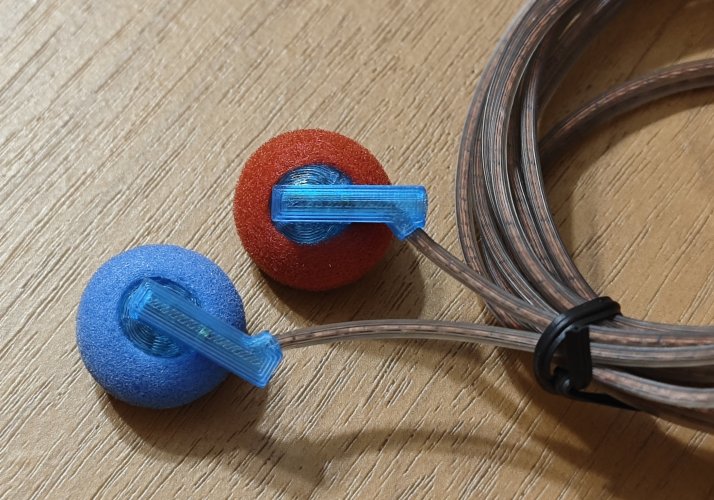Really nice measurements, well done! From these variations, the donut foam graph looks the most useful for me, maybe you could also try regular full foam. I use trig rain donuts as well but their full foam is almost unusable for me, ruins the treble and the details in my experience. I would certainly choose one of the more balanced kind of foam and stick to it for measurements, these differences above are specific to the measurement device anyway.
Your graphs look quite similar to mine, except for the valley in the upper mids (between 2-5khz) where mine produces a smooth upper arch, but I know it's over-represented compared to my subjective listening (the qian25 below sounds close to flat) so I compensate in my head. I guess yours is more realistic, but that sudden bump can be misleading a bit. Reminds me of csglinux's measurements, he is in the earbuds-roundup topic, maybe you could contact him for more advice, he probably uses something similar. Do you have other cheap earbuds, like vido, qian series, ry4s ue etc? I know that direct comparison will never be realistic, but I would be very interested in how your rig would measure them.

For tuning purposes, I wouldn't alter the levels if the graphs are from the same earbud with the same input volume. I find it much more useful to see exactly how the response changes relatively. If I compare two different earbuds, I usually align them at 1Khz for comparison. (via controls button on top right corner) I usually do several measurements with 1 sweep (256k) and average them (I delete failed/misaligned measurements before) I set the limits of the chart for a nice balanced graph that is easier to read.
I don't really post my measurements because the 2-5khz bump can confuse people and they try to read it at face value (and there are two small peaks from my rig at 250hz and 1250hz that I'm lazy to learn how to compensate out) I'm not bothered by them but I have to point those out every time if I share a graph somewhere. If I do share a graph I usually apply a really small smoothing, something like 1/48 or 1/24, just to make the lines cleaner.
Here's an example, one of my favorite builds with the Titanium 64 speaker, compared to my baseline Qian25 blue which is a neutral, tight, slightly bright earbud. As you can see the T64 has vastly superior bass extension (which is even slightly reduced in this tuning), with well controlled bass and lower mids.The bass only starts to grow below 200hz, peaking below 100hz, just as I like. The slightly emphasized upper mids around 2khz balance out the heavy hitting bass and somewhat soft treble quite nicely. The low treble around 6-7khz is at a natural level, not artificially brightened like with most cheap earbuds. Overall this is my current favorite in terms of tuning, I have some work to do with my 19-21 builds.

For another interesting comparison, here's the Faaeal Rosemary, which is also a darkish and bassy earbud, but this has the typical sloppy, warm, boomy lower half and dark upper mids. (but among the better controlled ones) Even with the extra boost, the extension is far away from the Titanium.

Here's another interesting one: Titanium vs white vido. Vido is a typical v-shaped bud with sucked out low-mids which crate an over-represented upper half thus making the sound grainy. The darkness of the vido comes from the low quality speaker it has, with the same graph an emx500 sounds really sharp and bright. This is a kind of comparison where I wouldn't necessarily align at 1khz for presentation, because the difference is so big that it can be misleading. Aligning at 2khz would make a more realistic impression in this case, but that is not perfect either. For tuning I always align at 1khz because I check everything relative to it anyway. Maybe normalizing would be the best way in this case for display purposes, but I don't know how to do that in REW. So this is certainly up for personal preference.
Here's aligned at 1khz

Here's the same thing but aligned at 2khz

.



































